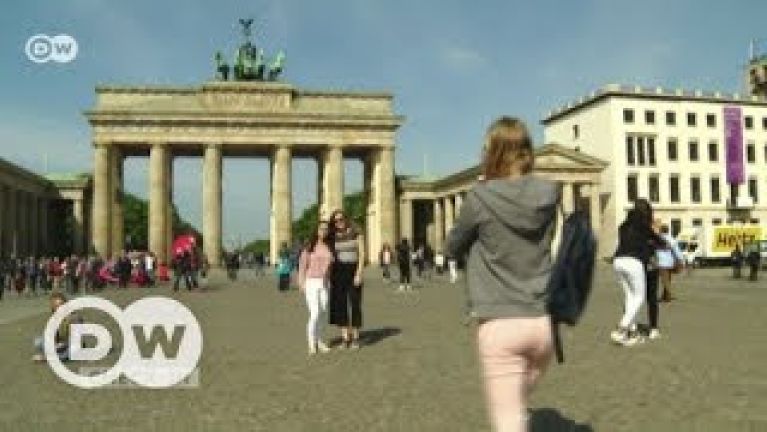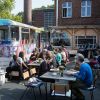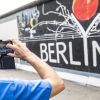The Brandenburg Gate in Berlin: symbol of German history
From Prussian city gate to symbol of reunification - the Brandenburg Gate in Berlin is a mirror of German history like no other building.
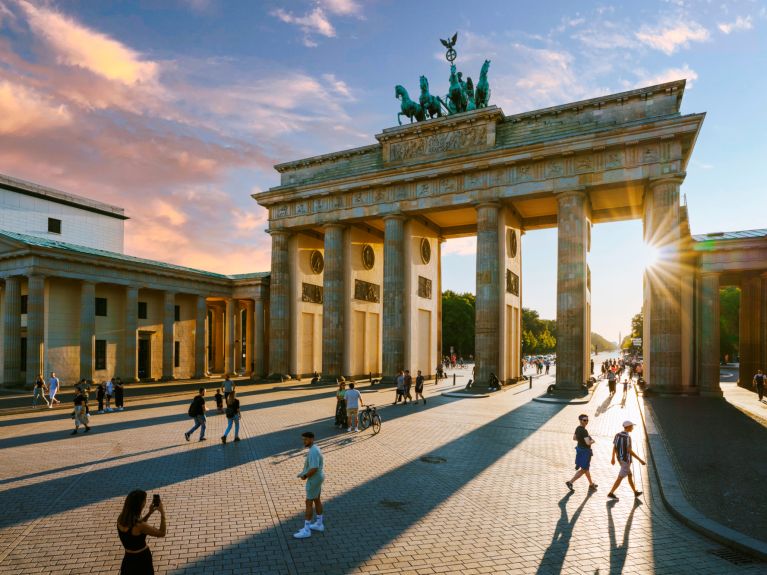
The Brandenburg Gate is one of Berlin’s best-known landmarks and a powerful symbol of German reunification. Once a gate into Berlin, today it is the only one of the 18 city gates to survive in the German capital. In Prussia, neoclassical architecture was considered characteristic of monumental city buildings - and the Brandenburg Gate was one of the first. The Brandenburg Gate is also depicted on the German 10-, 20- and 50-cent coins.
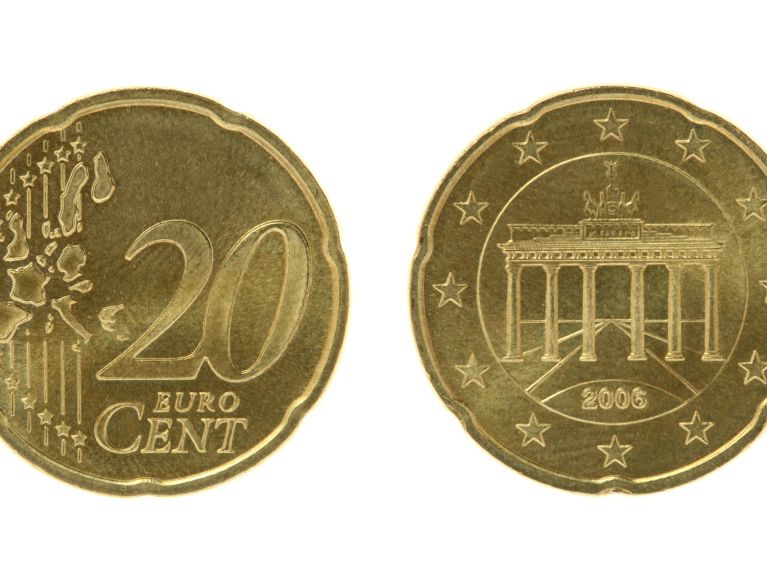
The Brandenburg Gate in Berlin is a popular meeting place, city sight and backdrop to major events - like the big New Year’s Eve party that is held there. The Brandenburg Gate is impressively illuminated at night.
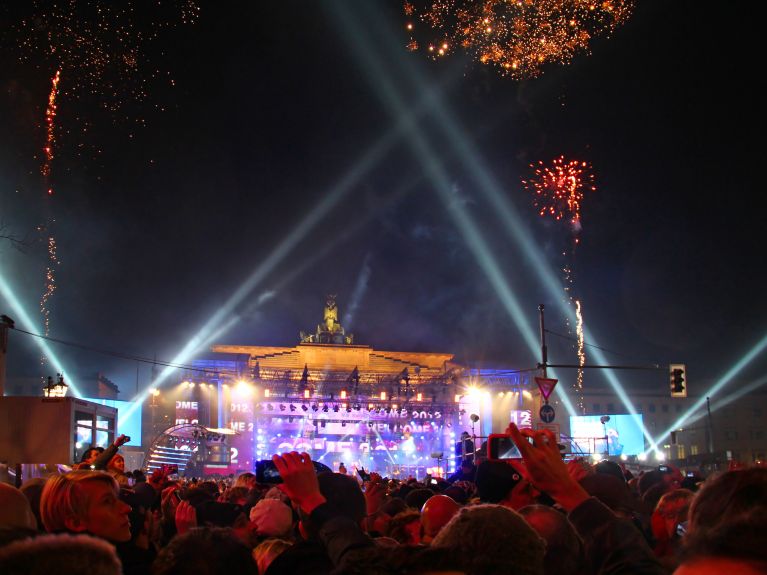
What is to be found close to the Brandenburg Gate?
The Brandenburg Gate is situated at Pariser Platz in the historic centre of Berlin, at the end of the grand boulevard Unter den Linden.
Numerous other sights are to be found nearby, including
- the Reichstag
- the Berlin Wall Memorial
- Museum Island
- Friedrichstadt-Palast Berlin
- The Memorial to the Murdered Jews of Europe
Berlin’s party mile with a history
What is the Strasse des 17. Juni (Street of the 17th of June) named after? And which sights are to be found along its route? Let us show you some photos and a fast-paced video!
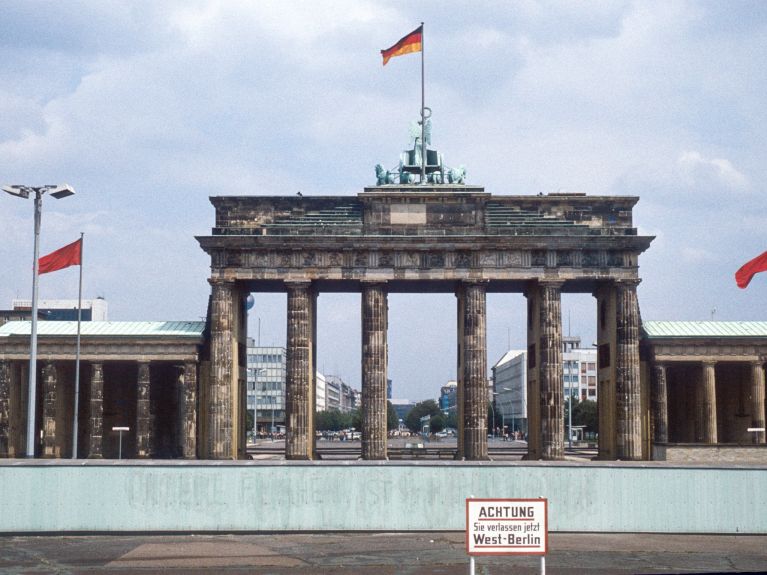
Why is the Brandenburg Gate famous?
- The Brandenburg Gate in Berlin is world famous because it symbolises - like no other building - German history and the path from a divided to a reunited Germany.
- Following the end of Napoleonic rule, the Brandenburg Gate was a symbol of Germany’s freedom, above all because of the Quadriga that sits atop it.
- The Quadriga is a sculpture of Victoria, the Roman goddess of victory, in a chariot drawn by four horses abreast.
- In 1806, Napoleon took the sculpture back to Paris with him as a trophy following his defeat of the Prussians. When the Prussians captured the French capital in 1814, it was brought back and reinstalled on the Brandenburg Gate.
- When the Berlin Wall was built in 1961, the Brandenburg Gate became a symbol of German division and the Cold War. It was situated directly behind the Wall.
- In 1987, US President Ronald Reagan gave a historic speech within view of the Brandenburg Gate and uttered the now famous words “Mr Gorbachev, tear down this wall!“ – an iconic moment in the Cold War.
- After thefall of the Berlin Wall on 9 November 1989, the Brandenburg Gate was officially opened as a border crossing on 22 December 1989. People from both sides, East and West, celebrated together at Pariser Platz.
- On 3 October 1990, the accession of the GDR to the Federal Republic of Germany was celebrated at the Brandenburg Gate - making it the ultimate symbol of reunification.
Other historic buildings you need to have seen in Germany
Magnificent palaces, rusty industrial relics, romantic historic town centres and natural beauty worthy of protection - a journey around Germany’s World Heritage sites.
Which goddess stands on the Brandenburg Gate?
The gate comprises twelve sandstone columns forming five passageways and is crowned by the famous Quadriga, a sculpture of the Roman goddess of victory Victoria on a chariot drawn by four horses.
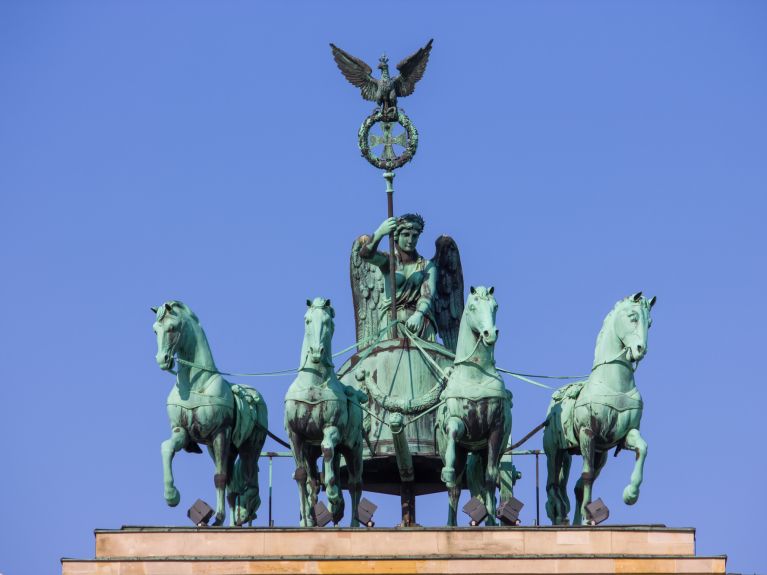
When was the Brandenburg Gate built?
The Brandenburg Gate was built in the 18th century: master builder Carl Gotthard Langhans designed it for Prussian King Frederick William II, drawing inspiration from the Acropolis in Athens. The monumental gate was built between 1789 and 1793 during the architectural era known as neoclassicism. The bronze sculpture of the Quadriga was created in 1793 by Johann Gottfried Schadow.
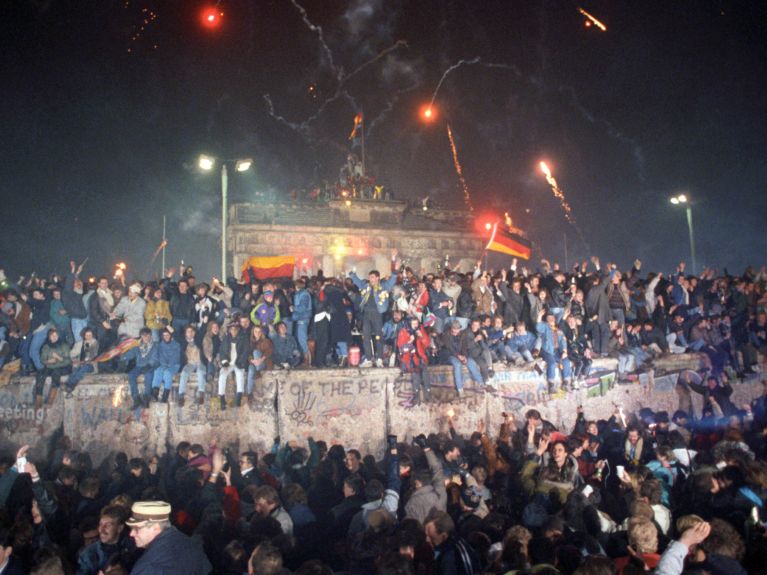
Did the Berlin Wall run through the Brandenburg Gate?
No, the Wall didn’t run through the Brandenburg Gate but did stand directly behind it on the territory of the GDR. Situated on Pariser Platz, the Brandenburg Gate sat directly on the border between East and West Berlin and was therefore a restricted area. During this period it was heavily guarded.
Checkpoint Charlie, one of the best-known border crossings used by the Western Allies in Berlin, was situated near the Brandenburg Gate. This crossing was only intended for military personnel and diplomats, however.
The fall of the Berlin Wall
The peaceful revolution staged by the people in the GDR brought about the fall of the Berlin Wall.
On the Berlin Wall trail through Berlin
The Berlin Wall trail links the present and the past.
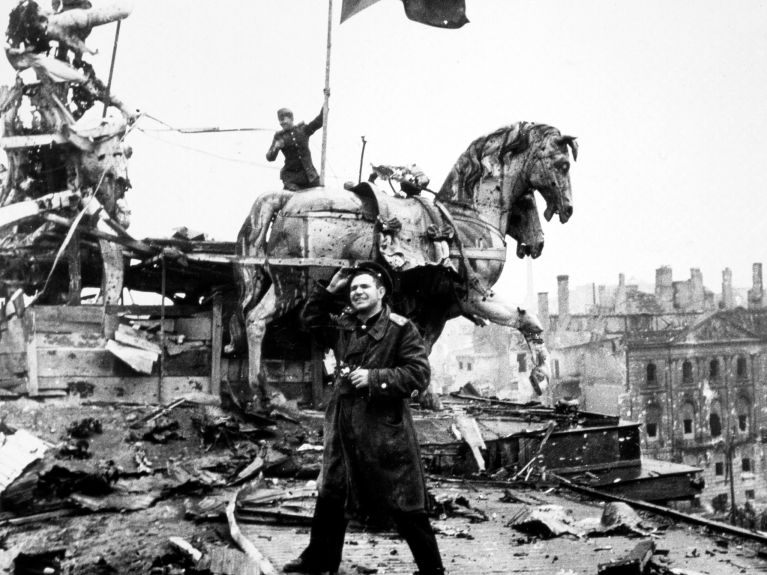
Was the Brandenburg Gate destroyed in the Second World War?
The Brandenburg Gate was badly damaged and the Quadriga sculpture almost entirely destroyed during the bombardment of Berlin in the Second World War. Although Germany was divided, the GDR and the FRG worked together on restoring the Quadriga in 1956 – and were able to take advantage of a plaster cast. Only one horse’s head remained of the original Quadriga, so it was replaced by a reconstruction that was an exact copy of the original.
Dieses YouTube-Video kann in einem neuen Tab abgespielt werden
YouTube öffnenThird party content
We use YouTube to embed content that may collect data about your activity. Please review the details and accept the service to see this content.
Open consent form